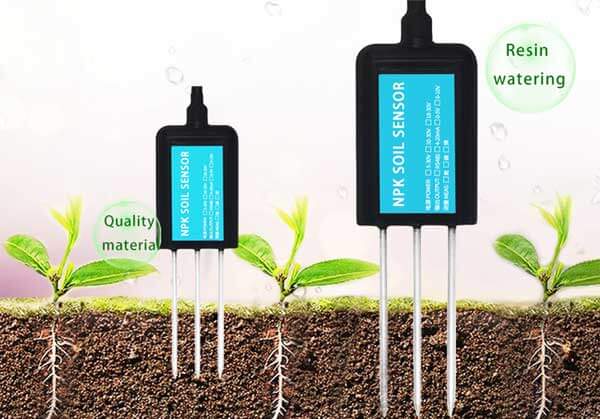Agriculture is an essential industry that plays a crucial role in feeding the world’s growing population. In recent years, advancements in technology have revolutionized the way we approach farming. Soil sensor technology, in particular, has emerged as a powerful tool to optimize agricultural practices. This article explores the recent advancements in soil sensor technology and their potential impact on agriculture.

Introduction to Soil Sensor Technology:
Soil sensors are devices that measure various parameters related to soil health and fertility. They provide real-time data on factors such as moisture content, temperature, electrical conductivity, pH levels, and nutrient content. With this information, farmers can make informed decisions about irrigation, fertilization, and other aspects of crop management.
Wireless and IoT Connectivity:
One significant advancement in soil sensor technology is the integration of wireless communication and Internet of Things (IoT) connectivity. Traditional soil sensors required manual data collection, which was time-consuming and labor-intensive. With wireless connectivity, soil sensors can now transmit data in real-time to centralized databases or directly to farmers’ mobile devices, enabling prompt decision-making. This technology allows farmers to remotely monitor soil conditions and receive alerts or warnings when certain thresholds are exceeded.
Enhanced Accuracy and Reliability:
Advancements in sensor technology have led to improvements in accuracy and reliability. Modern soil sensors utilize advanced sensing elements and sophisticated algorithms to ensure precise measurements across various soil types and conditions. These sensors can distinguish between different types of soil moisture, such as gravitational water, capillary water, and hygroscopic water, providing farmers with a more comprehensive understanding of soil moisture dynamics. Additionally, improved sensor calibration techniques have enhanced accuracy and reduced measurement errors.
Multi-Parameter Sensing:
The latest soil sensor technology enables the simultaneous measurement of multiple parameters. Instead of using separate sensors for each parameter, farmers can now rely on a single sensor to monitor multiple factors. For example, a soil sensor may measure moisture content, temperature, and electrical conductivity simultaneously. This multi-parameter sensing capability provides a holistic view of soil conditions, allowing farmers to make more precise decisions.
Advanced Data Analytics:
Advancements in data analytics have complemented soil sensor technology. With the increasing availability of big data tools and machine learning algorithms, farmers can analyze vast amounts of sensor data to gain valuable insights. Machine learning models can identify patterns and correlations between soil conditions and crop performance, enabling farmers to optimize their farming practices further. This data-driven approach enhances productivity and reduces risks associated with excessive resource use.
Mobile Applications and User-Friendly Interfaces:
To make soil sensor technology accessible to farmers, mobile applications and user-friendly interfaces have been developed. These applications allow farmers to visualize and interpret sensor data easily. They provide customizable dashboards, real-time graphs, and intuitive alerts, enabling farmers to monitor soil conditions seamlessly. Furthermore, some applications offer insights and recommendations based on historical data analysis, empowering farmers to make informed decisions.
Cost Reduction:
As with any emerging technology, the cost of soil sensors has been a significant barrier to adoption by small-scale farmers. However, advancements in manufacturing techniques have led to cost reductions. The increased demand for soil sensors has also contributed to economies of scale, making them more affordable for farmers. Additionally, government support and incentives can further promote the adoption of soil sensor technology, especially among small-scale farmers.

Integration with Precision Agriculture:
Soil sensor technology has found synergy with other precision agriculture technologies, such as drones and satellite imaging. These integrated systems provide a comprehensive understanding of soil conditions across large areas and enable site-specific management. Drones equipped with soil sensors can collect high-resolution data, while satellite imagery can provide macro-level information. Combined with advanced analytics, this integration allows for precise decision-making at both field and regional scales.
Environmental Sustainability:
The advancements in soil sensor technology have significant implications for environmental sustainability. By providing accurate and real-time data, soil sensors help farmers optimize resource utilization, such as water and fertilizers. Precision irrigation and targeted fertilization reduce overuse and minimize the risk of nutrient ru